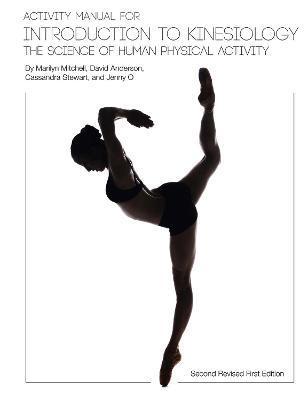Activity Manual for Introduction to Kinesiology: The Science of Human Activity (Second Revised First Edition)

Activity Manual for Introduction to Kinesiology: The Science of Human Activity (Second Revised First Edition)
Used in conjunction with the main textbook, the Activity Manual for Introduction to Kinesiology: The Science of Human Physical Activity provides outstanding, accessible, hands-on application of the concepts of kinesiology. Teaching kinesiology courses can be challenging given the scope of material across all the sub-fields. Additionally, there is often a lack of resources to provide expensive laboratory equipment for introductory classes. This manual provides instructors with laboratory experiences that involve all the students in the introductory class, as well as activities for individual students in programs that do not offer lab sections. The labs and activities in the manual require minimal and inexpensive equipment. Many important features of the manual serve to enhance the textbook: Activities are provided for each chapterOne or more labs are provided for each chapterAll activities and labs have a clearly stated purpose, an introduction, methods/materials, results and discussion questions, and reference sectionsAll activities and labs have relevant graphics, charts or tables to support learningDiscussion questions stimulate critical thinking and encourage further researchMany of the activities and labs use a cross-disciplinary approach to aid understanding of the material
The extensive range of activities in this manual makes it possible for professors to easily provide numerous opportunities for meaningful application of the study of kinesiology. Marilyn Mitchell, Ph.D., is a professor in the Department of Kinesiology at San Francisco State University, where she teaches Motor Learning, Neuromotor Control Processes, and Introduction to Kinesiology. Dr. Mitchell earned her Ph.D. in physical education at the University of Wisconsin-Madison with a specialization in Motor Learning and Control. She served as Chair of the Department of Kinesiology at the University of Colorado at Boulder. She has also served as president of the North American Society of Psychology of Sport and Physical Activity. Dr. Mitchell is a fellow in The National Academy of Kinesiology. David Anderson, Ph.D. is a professor in the Department of Kinesiology at San Francisco State University and is the former Chair of the Department. Dr. Anderson earned his Ph.D. at Louisiana State University in the area of Motor Behavior. He has taught Introduction to Kinesiology, Motor Learning, Motor Development, Neuromotor Control Processes, and Sport and Exercise Psychology. Dr. Anderson i
PRP: 560.24 Lei
Acesta este Pretul Recomandat de Producator. Pretul de vanzare al produsului este afisat mai jos.
504.22Lei
504.22Lei
560.24 LeiLivrare in 2-4 saptamani
Descrierea produsului
Used in conjunction with the main textbook, the Activity Manual for Introduction to Kinesiology: The Science of Human Physical Activity provides outstanding, accessible, hands-on application of the concepts of kinesiology. Teaching kinesiology courses can be challenging given the scope of material across all the sub-fields. Additionally, there is often a lack of resources to provide expensive laboratory equipment for introductory classes. This manual provides instructors with laboratory experiences that involve all the students in the introductory class, as well as activities for individual students in programs that do not offer lab sections. The labs and activities in the manual require minimal and inexpensive equipment. Many important features of the manual serve to enhance the textbook: Activities are provided for each chapterOne or more labs are provided for each chapterAll activities and labs have a clearly stated purpose, an introduction, methods/materials, results and discussion questions, and reference sectionsAll activities and labs have relevant graphics, charts or tables to support learningDiscussion questions stimulate critical thinking and encourage further researchMany of the activities and labs use a cross-disciplinary approach to aid understanding of the material
The extensive range of activities in this manual makes it possible for professors to easily provide numerous opportunities for meaningful application of the study of kinesiology. Marilyn Mitchell, Ph.D., is a professor in the Department of Kinesiology at San Francisco State University, where she teaches Motor Learning, Neuromotor Control Processes, and Introduction to Kinesiology. Dr. Mitchell earned her Ph.D. in physical education at the University of Wisconsin-Madison with a specialization in Motor Learning and Control. She served as Chair of the Department of Kinesiology at the University of Colorado at Boulder. She has also served as president of the North American Society of Psychology of Sport and Physical Activity. Dr. Mitchell is a fellow in The National Academy of Kinesiology. David Anderson, Ph.D. is a professor in the Department of Kinesiology at San Francisco State University and is the former Chair of the Department. Dr. Anderson earned his Ph.D. at Louisiana State University in the area of Motor Behavior. He has taught Introduction to Kinesiology, Motor Learning, Motor Development, Neuromotor Control Processes, and Sport and Exercise Psychology. Dr. Anderson i
Detaliile produsului









